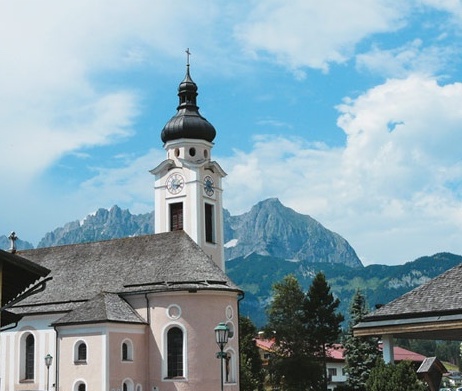for Violin & Piano – SHEET MUSIC $3.95
comp. by Franz Xaver Gruber; arr. by Richard Altenbach, ASCAP

The story of the creation of the beloved Christmas song, “Stille Nacht” or “Silent Night” is well-known. In the postcard Alpine village of Oberndorf, Austria, Christmas Eve 1818, a Catholic priest named Father Josef Mohr had a dilemma: Mass was to be celebrated that evening, but the church organ was kaput, perhaps due to rats in the pipes! While gazing down at the village that day, the inspired Father Mohr jotted down the soon-to-be-famous lyrics to a new song. He then tasked his organist Franz Gruber to come up with a melody to be accompanied on guitar. After just a few hours, Gruber premiered the carol.
Weeks later, renowned organ builder Karl Mauracher arrived to repair the Oberndorf organ. When he finished, he asked Gruber to test the instrument. The church organist proceeded to play the tune that had so recently occupied his soul, “Stille Nacht”. Greatly impressed, Mauracher took the words and music to his home village where eventually, two well known families of singers, the Strassers and the Rainers, heard it. These “King Family” type ensembles loved the carol and spread it throughout Europe. The Strasser sisters ultimately performed it for King Frederick Wilhelm IV of Prussia in 1834. The king did much to boost the fame of the lovely tune. In 1838, The Rainers brought the song to the US, singing it in German at New York’s Trinity Church.
What is perhaps less well-known is that the original character and even the melody itself has changed significantly from the original! The 1818 version fits the mold of a gentle, waltz-like Laendler in 3/4 time, more akin to a moderately lilting folk dance rather than a sentimental, slow hymn. Speculation is that the more angelic, languid approach proved more effective and fitting for a large singing ensemble such as those described above. In our modern rendition of the carol, the contour of the penultimate phrase soars, chorus-like, lingering upon the satisfyingly highest pitches and harmonies. These notes actually differ from the original tune, which also carries on more quickly and modestly, and is marked by a persistent dotted rhythm throughout. In addition, immediately at the end of the verse, Gruber repeats the final two phrases. This does not comport with the modern form of the song.
In Richard’s arrangement, the piano part reflects the song as printed in 1818 by Gruber, while the violin is added to adorn the revered melody with slight ornamentation at a higher register.




